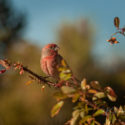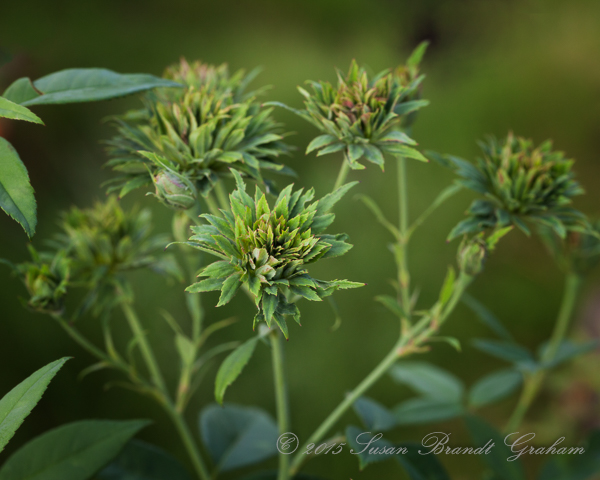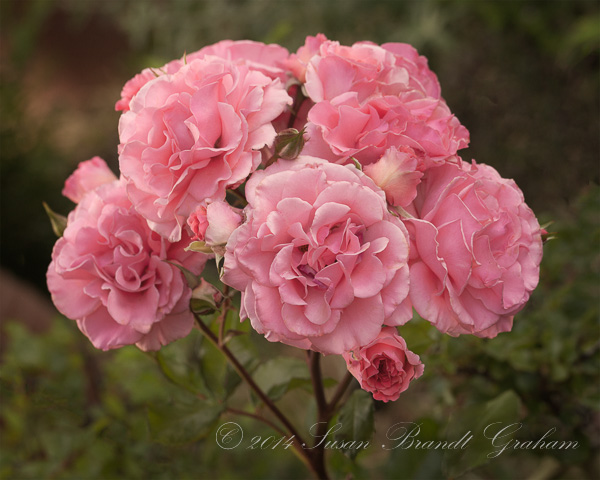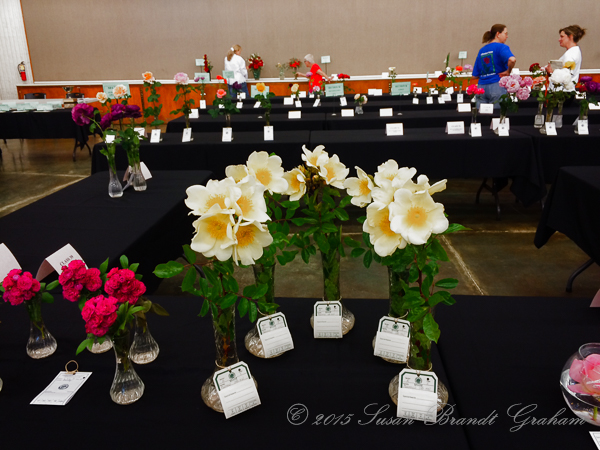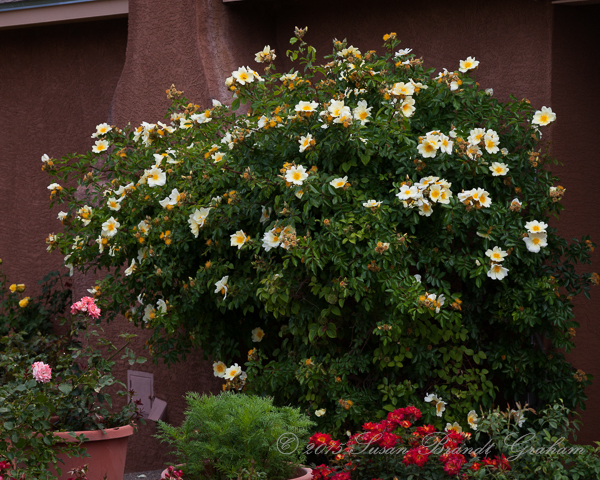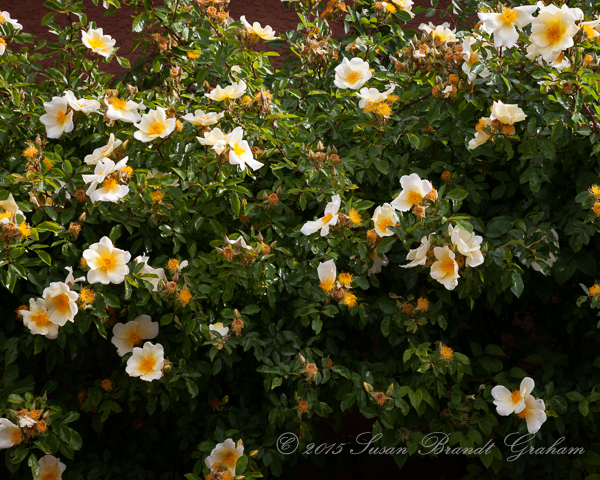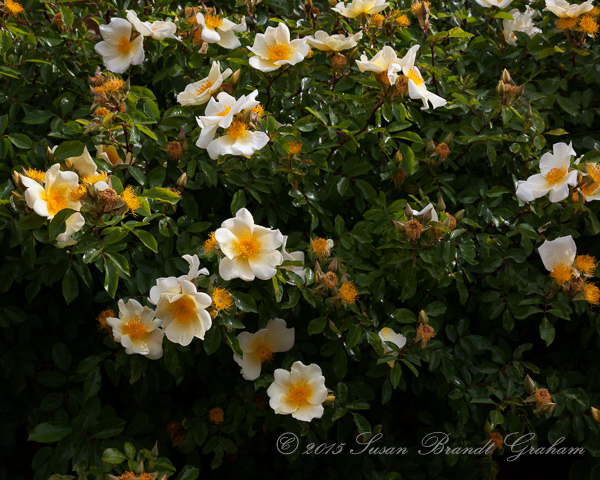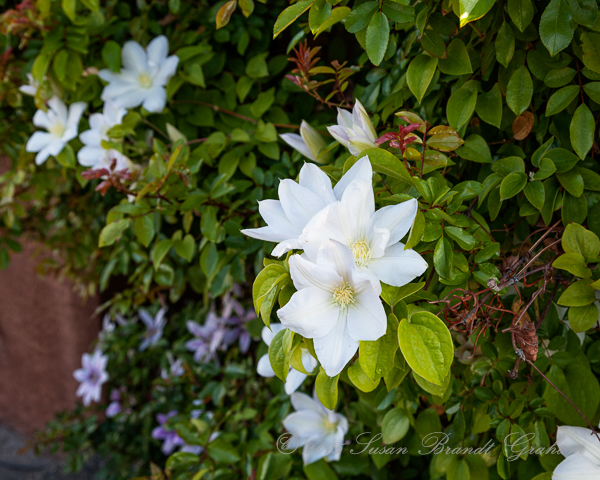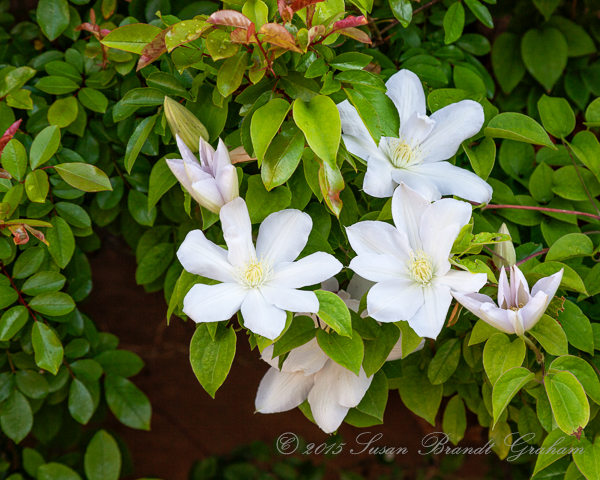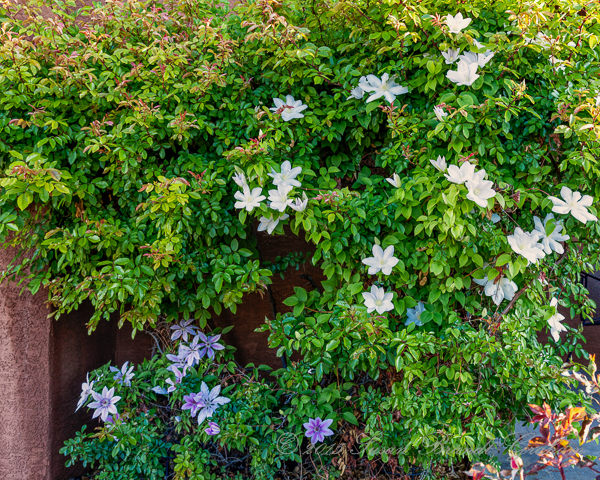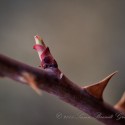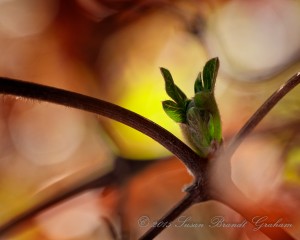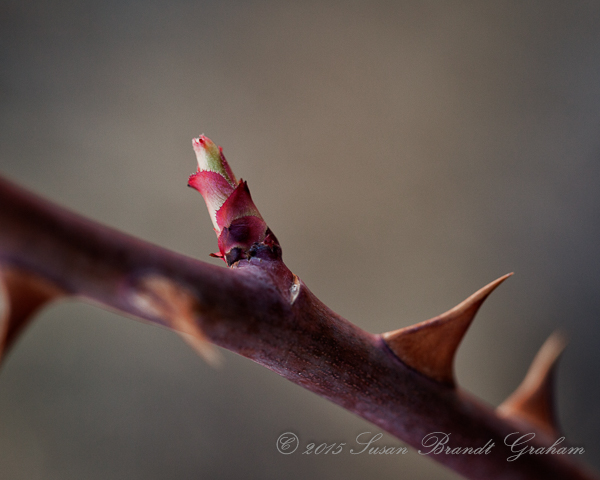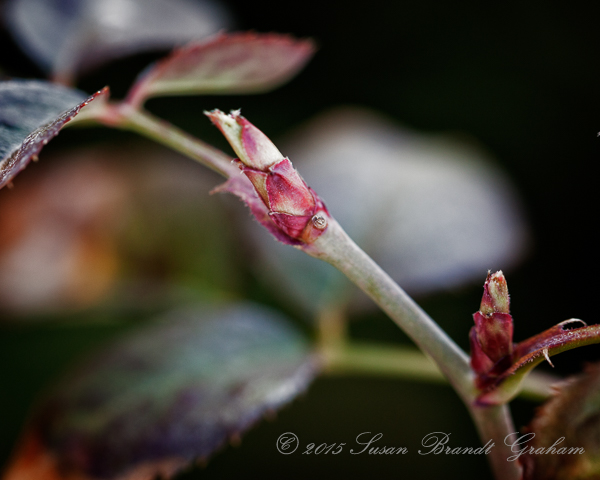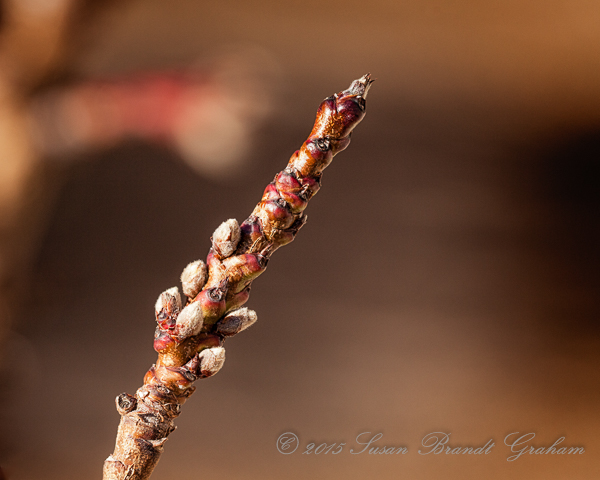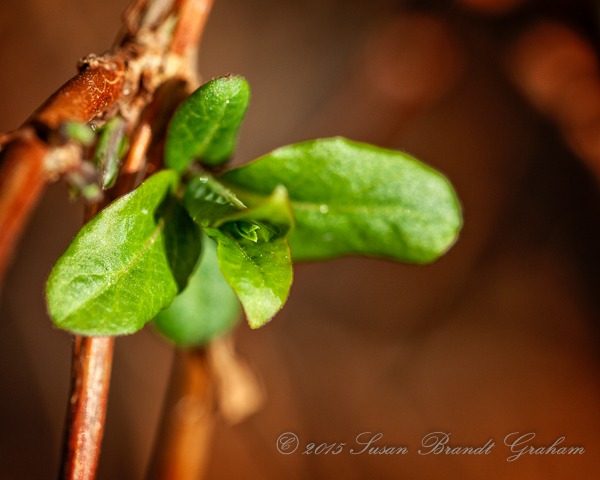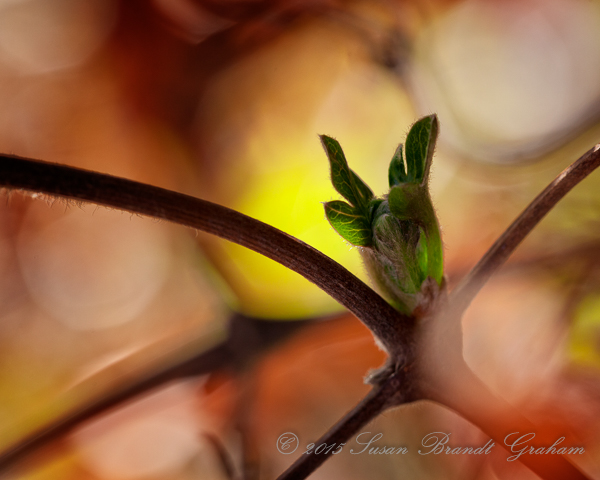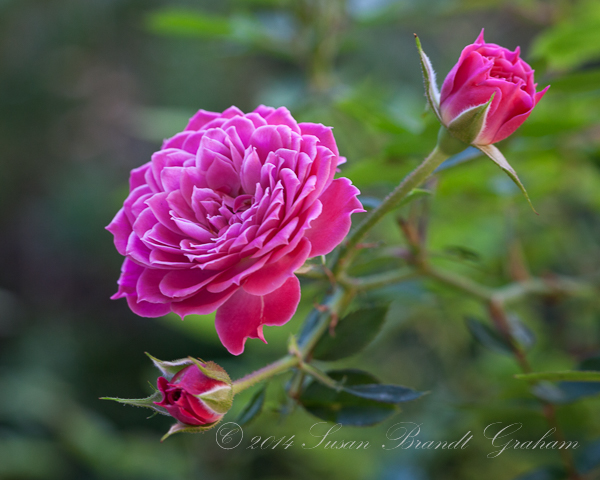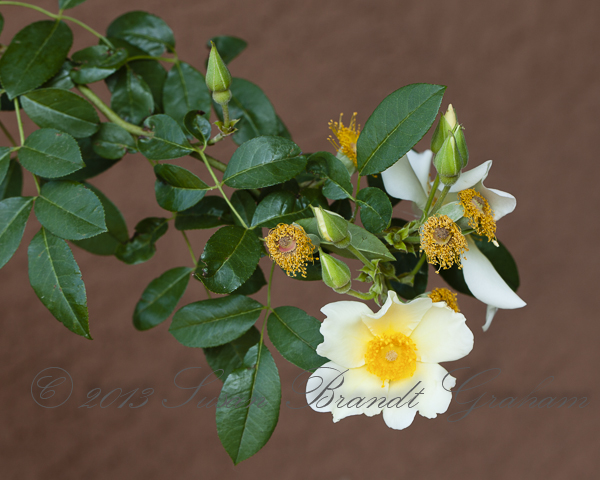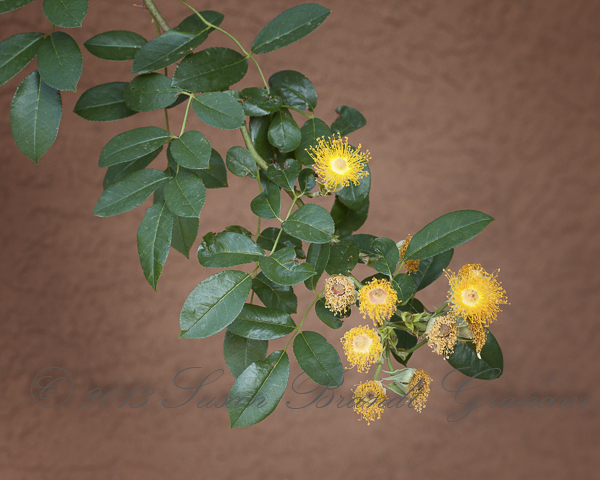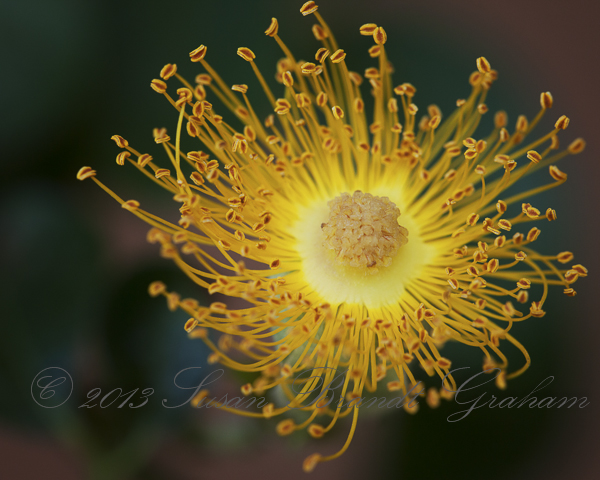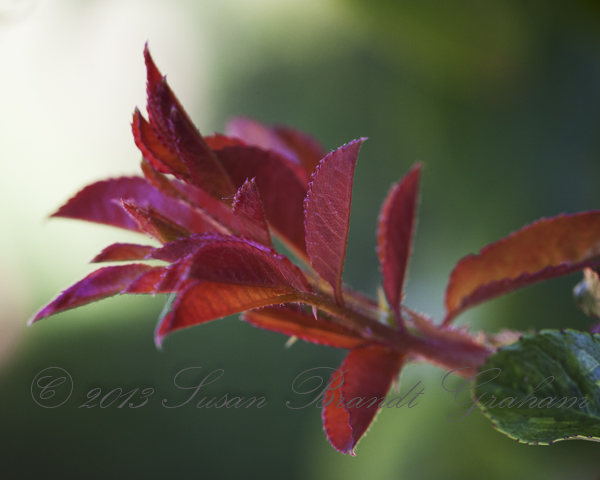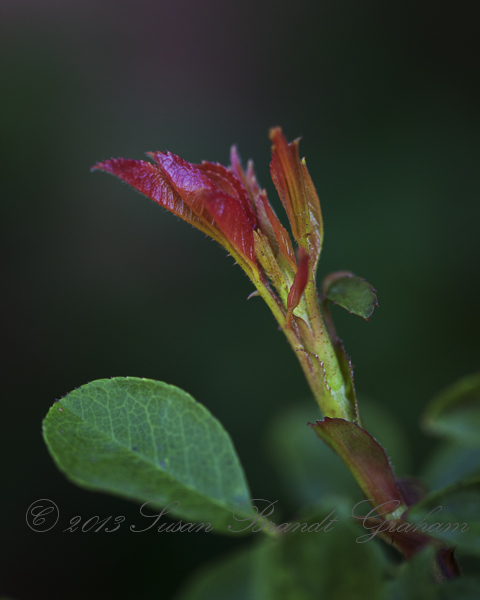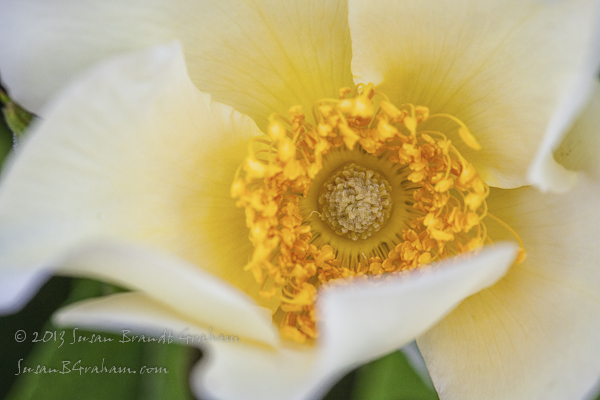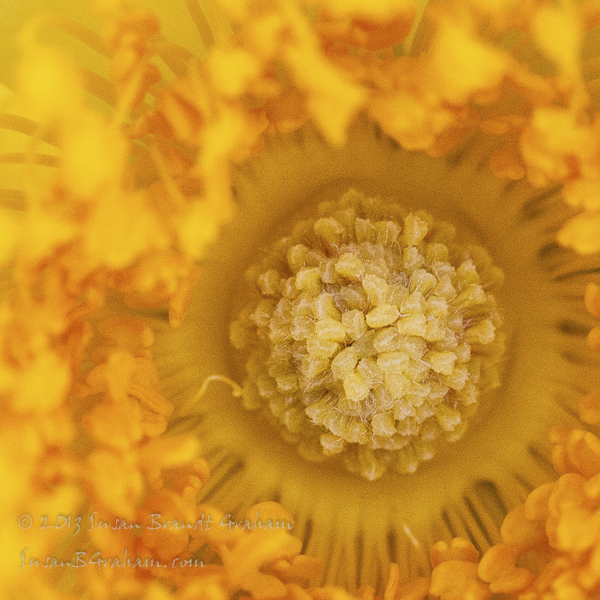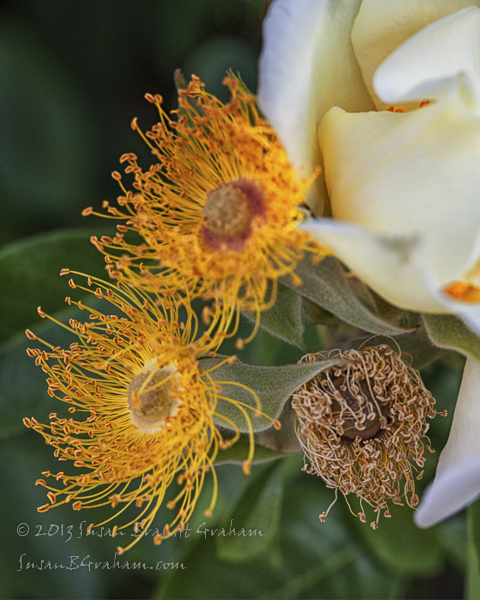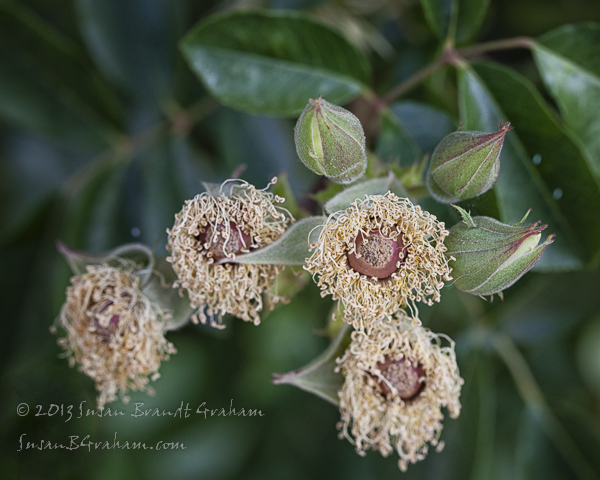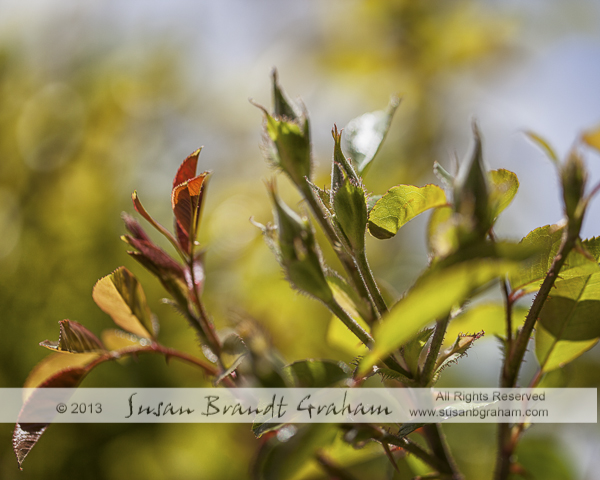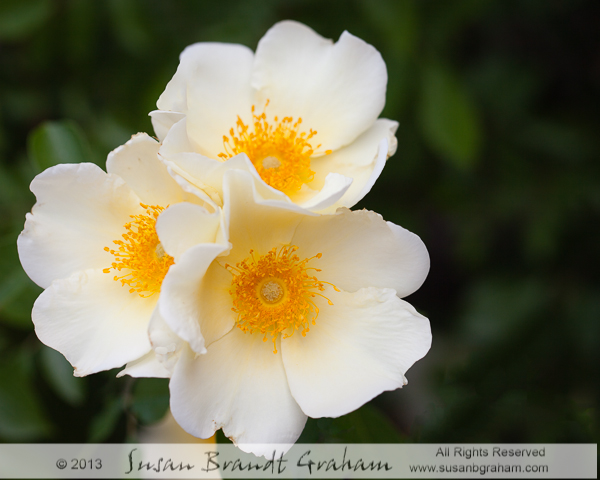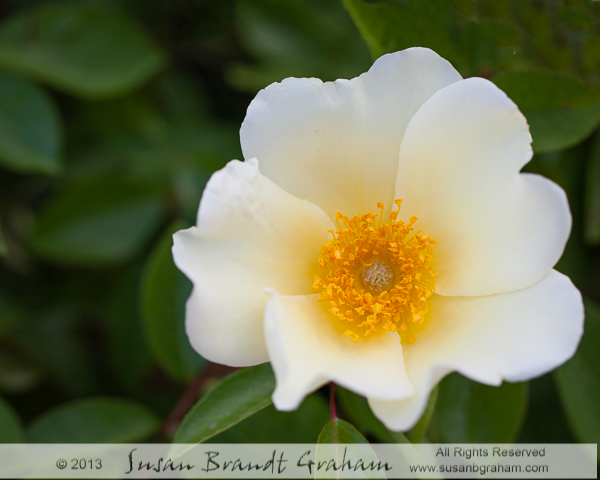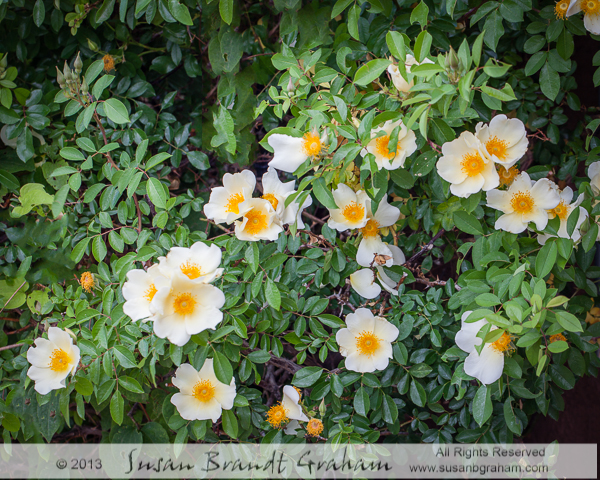House Finch in Breeding Plumage
House Finch in Breeding Plumage, on Rose ‘Mermaid’
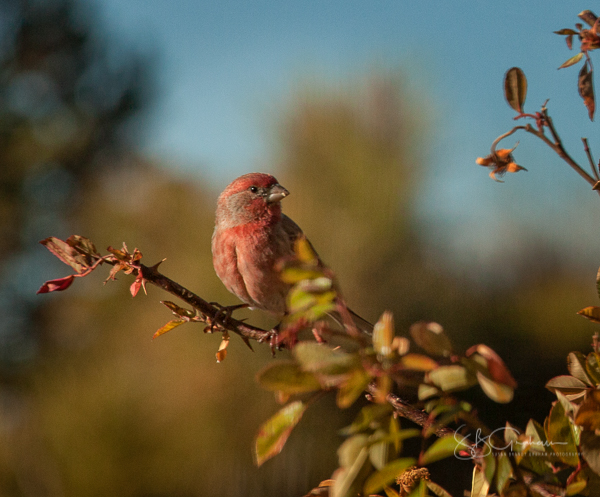
House Finch in Breeding Plumage, on Rose ‘Mermaid’
The house finch is a very common backyard bird here in Albuquerque. During breeding season, the males take on a much more colorful plumage. This guy seems pretty pleased with himself.
He is sitting on a branch of ‘Mermaid,’ a hybrid bracteata introduced in the US in 1918. Regular readers will recognize it as one of my favorite roses. I have hung a cylinder feeder near it, and any birds hang out on ‘Mermaid’ as they wait their turn at the feeder.
Roses are beginning to leaf out. ‘Mermaid’ is the one rose I cut back in the fall, for reasons I have explained multiple time over the years on this blog. So, I can just watch it leaf out and then bloom a little later.
The other roses, however, are leafing out a little earlier than I would like, and I will be pruning them soon. Hopefully, it will be safe… One year, before I knew anything about roses in Albuquerque, I pruned in February! I had one of the best spring blooms ever that year! But, I also recall 2005, when I pruned in early April and did not fertilize until late April. We got a hard freeze in May, which pretty much wiped out the spring bloom here. That was a freak occurrence, but in the time of climate change, who knows?
Nevertheless, I am ready to begin pruning roses, and will hope for the best.
I will also enjoy the birds that come to the yard. 🙂

